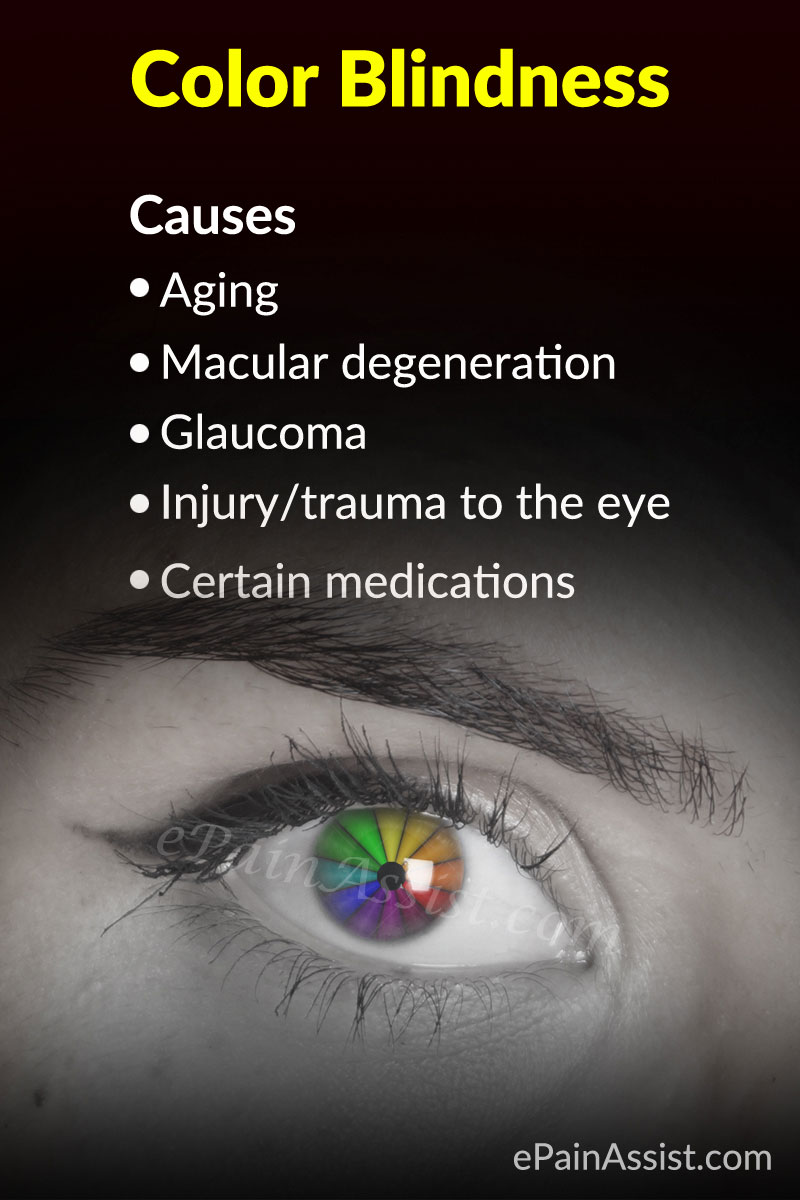What is Color Blindness or Color Vision Deficiency?
Person suffering from Color blindness will have difficulty seeing the colors red, blue, green or a combination of these colors. In extremely rare cases, a person may not be able to identify any color at all. Color blindness is also known as a color vision problem. A color vision problem can make an individual’s life very difficult, as it is very hard for them to learn and read. Individuals with this problem may also not be able to pursue certain careers. However, children and adults with this problem can adapt and compensate for their problem of not being able to distinguish colors.
Causes of Color Blindness or Color Vision Deficiency
Majority of the color vision problems are genetic/inherited and are present at child birth itself. Commonly, there are three types of cone cells present in the eye. Each type has the ability to sense the red, green, or blue color. Many of the cone cells are present in the macula, which is present in the center of the retina. In inherited color blindness, there is absence of one of these types of cone cells or they do not function properly. The affected person may not be able to visualize one of these three basic colors, or may view a different shade of the color or an entirely different color. There is no change to be found in this type of color vision problem as the person ages.
Other than inherited color vision problem, a person may also have an acquired color vision problem, which can be caused by:
- Aging.
- Other eye problems, such as macular degeneration, glaucoma, diabetic retinopathy, or cataracts.
- Injury/trauma to the eye.
- Due to side effects from certain medications.
Symptoms of Color Blindness or Color Vision Deficiency
- The patient is able to visualize some colors, but not others, e.g., the patient is unable to tell the difference between red and green color, but is able to visualize the colors blue and yellow.
- Patient is able to see multiple colors and may not be able to differentiate one color from another.
- Patient is able to visualize only some shades of a color.
- Rarely, patient can see only black, white and gray colors.
Tests to Diagnose Color Blindness or Color Vision Deficiency
The below mentioned tests are done to assess how well the patient can recognize different colors:
- In this particular test, the patient is told to look at sets of colored dots and is asked to find a pattern in them (letter or number). The patterns which the patient is able to identify help the doctor in identifying the colors which the patient has trouble with.
- In another test, the patient is asked to arrange colored chips in order of the similarity of the colors. Individuals having color vision problems are unable to arrange the colored chips in the right manner.
Treatment for Color Blindness or Color Vision Deficiency
- There is no treatment for inherited color blindness or color vision problem.
- Depending on the cause, treatment can be done for some acquired color vision problems, such as, if cataract is the cause of color vision problem, then surgery for cataract removal can restore normal color vision.
- There are other methods for compensating the color vision problem, such as:
- Wearing colored contact lenses helps in distinguishing the differences between colors; however, these lenses cannot provide normal color vision and may cause distortion of objects.
- Glasses can be worn to block the glare, as individuals with color vision problems are better able to distinguish between colors when the glare or brightness is less.
- Patient can learn techniques or cues like brightness or location, instead of color, such as memorizing the order of the colored lights present on a traffic signal.
As having a color vision problem can have a significant impact on an individual’s life, it is vital that this problem is detected as soon as possible. Children with color vision problems have difficulty in learning writing and reading. Also, having color vision problems may hinder a person from following particular careers where it is mandatory to tell the colors apart. It is recommended that children between ages 3 and 5 have regular eye exams. Children before starting their school life should undergo vision screening at least once.


